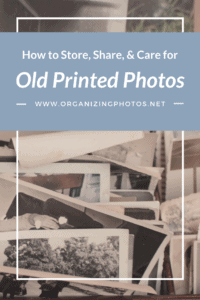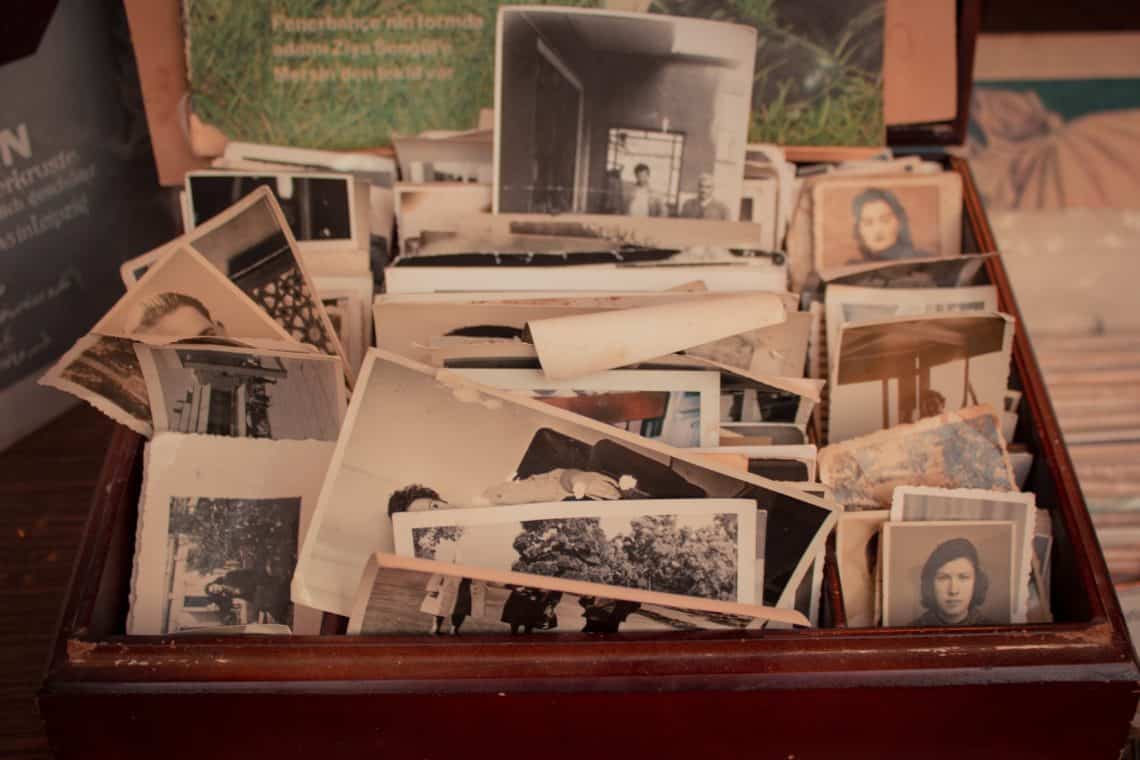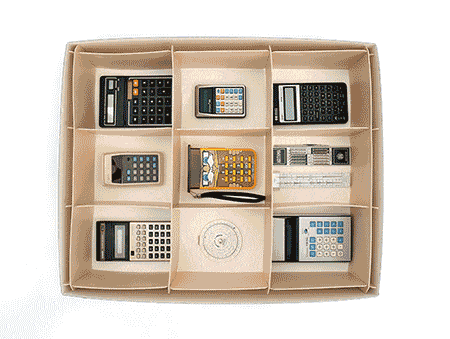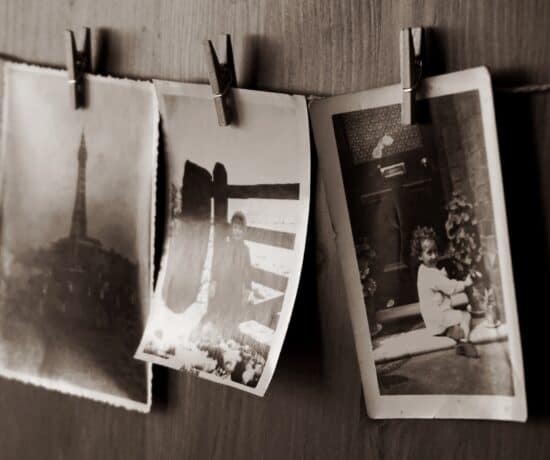If you’re looking for ways to store your old printed photos, or generally just a few tips on how to treat them well (for example, getting photos out of magnetic albums), you’re in the right place. In this articles, we’re going to talk about how to store, share, and care for old printed photos, so that your family will have memories for years to come!
Got Printed Photos?
Everyone has that one box full of family memories, but few tackle it with the appropriate amount of gusto that a photo organizer does! That’s why this article is here. We wanted to give you a few tips on how to get started and what to prioritize when dealing with old printed photos, so that you can start making some headway on your legacy.
Let’s start with storage!
1. Invest in Good Quality Storage
It might not seem like an important thing, but it matters a lot where you store your photos. The right boxes (or binders), room temperature, and humidity levels are essential in making sure the environment doesn’t end up ruining your memories. That goes for printed photos especially, but also for slides and negatives.
If you can, invest in archival storage boxes. Even if you photos aren’t organized, that will at least prevent them from degrading further. I love plastic boxes for sorting photos while I’m organizing, but for long-term storage, it’s better to pick something breathable that doesn’t lock in moisture. Our friends over at Archival Methods have great solutions for this.
As for temperature, avoid extremes. A room temperature of around 75 degrees is best, so if you can keep your photos climate-controlled, do it. Keep them away from basements that can flood, and areas (for example, the garage) where they might get dirty.
2. Get Photos Out of Magnetic Albums
Remember back in the day when those sticky magnetic albums were all the rage? They were so convenient because they were easy to use, and held the photos in place. You probably had several on your shelves. Back then, there weren’t many archival options on the market for general consumption, so that’s the best we had to work with. No so anymore.
Those sticky albums aren’t great for your photos, and we know that now, so if you still have some, time’s up. These albums leave residue on your photos and accelerate their degradation, so we want to make sure you get photos out of those albums and into better ones S.T.A.T. Choose archival supplies of good quality (see tip #1) and trade up to keep your photos safe.
Getting photos out of magnetic albums can be a real pain, but armed with a small craft spatula, some un-du adhesive removal gel, some rubber-tip tweezers, archival gloves, and a blow dryer, you can get the job done. Just be careful!
3. Don’t Frame Original Copies
If you want to display photos around the house, don’t use the original copies. Why? Well, because they’re likely the most fragile ones, often with old handwriting that you’ll want to preserve, and… photos in frames often end up sticking to the glass because of improper storage.
Instead, scan or photograph them and make a good quality copies that you can reprint and frame. Then archive the original per tip #1. This gives you the freedom to have a lot more creative fun with your photos because your main archive is always intact. When you have digital photos, you can restore them, colorize them, and use them in projects. Removing shine from photos and pictures is easy to do with the right app.
If you must, for whatever reason, frame an original photos, take it to a photo framer who can place it in a quality frame with archival glass, and hang it somewhere away from humidity and direct sunlight.
4. Get Good Quality Scans when Digitizing Old Photos
The best way to preserve your old photos long-term is to digitize them, so seek out a trustworthy local company that can get that job done for you. We recommend using a professional service for best results. The learning curve for scanning is very steep, and you don’t want to do the job only to find out you did it incorrectly.
Scanning apps and consumer-grade scanners (anything under $200) are generally not enough for a professional-quality scan, so we often recommend people stay away from those. Those scans may be good enough to look at on a computer, but they’re worthless in terms of print quality and preservation. At least as of today.
If you are going to do it properly yourself, set aside at least $2500-$3000 for decent equipment and invest the time to make sure you do it right and get the quality your memories deserve. For scanning, we generally recommend TIFF files north of standard printing quality, and for cameras, you’ll want to shoot RAW.
5. Share Photos With Family and Friends
Most printed photo archives are filled with duplicates, courtesy of the 2-for-1 sales back in the day. Weren’t those great? Except now, your memory box is likely inflated. That’s OK though because this gives you an opportunity to grab some of those copies and send them off to family members and friends that helped you make those moments.
Sending a photo is an excuse to reconnect with anyone you haven’t seen in a while, and I don’t know about you, but I LOVE getting photo gifts. It shows people that you care, and remember that even though you might have seen the photos, they likely have not! So share away, and put those duplicates to good use!

I’m a Perfect Pinnable!
What Can You Do Next?
So to sum up, storage is #1, as always. Naturally, I would like your to have organized memories (hence the blog, lol), but I know that not everyone has the time or funds required to make that happen right away. So, if you can organize first, do it, but if you can only choose one, choose proper storage.
Second is storage. Again. Get your photos out of the magnetic albums and into something that will last.
Third is storage. Again. Don’t experiment with your originals. That’s what copies are for, right?
Fourth, get those photos digitized as soon as you can. If they are organized beforehand, all the better, but regardless, make sure you get good quality scans because if you don’t, what’s the point?
And finally: share, share, share! Put those duplicates to good use while right-sizing the archive you’re passing down. A curated collection makes all the difference!
So, which of these things can you do next to make sure your memories leave a mark?
Let us know in the comments below!





